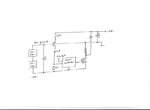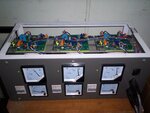mrinalmani
Advanced Member level 1
- Joined
- Oct 7, 2011
- Messages
- 463
- Helped
- 60
- Reputation
- 121
- Reaction score
- 58
- Trophy points
- 1,318
- Location
- Delhi, India
- Activity points
- 5,285
Hi
I am asked to design a solar MPPT for a 48V battery system.
Open circuit voltage of a single solar panel is approx 36V. The user needs the MPPT to be compatible up 3 panels in series. This is approx. 100V open circuit voltage. Maximum power output should be near 70V in this case. But the battery voltage is only 48-50V. Boost converter based MPPT will probably not work.
Is it common to have panel arrangement where the battery voltage is lower than the maximum power point voltage of the solar panels?
Please give suggestions how to design a MPPT where the panel maximum power voltage is higher than the battery voltage.
Thanks
I am asked to design a solar MPPT for a 48V battery system.
Open circuit voltage of a single solar panel is approx 36V. The user needs the MPPT to be compatible up 3 panels in series. This is approx. 100V open circuit voltage. Maximum power output should be near 70V in this case. But the battery voltage is only 48-50V. Boost converter based MPPT will probably not work.
Is it common to have panel arrangement where the battery voltage is lower than the maximum power point voltage of the solar panels?
Please give suggestions how to design a MPPT where the panel maximum power voltage is higher than the battery voltage.
Thanks



